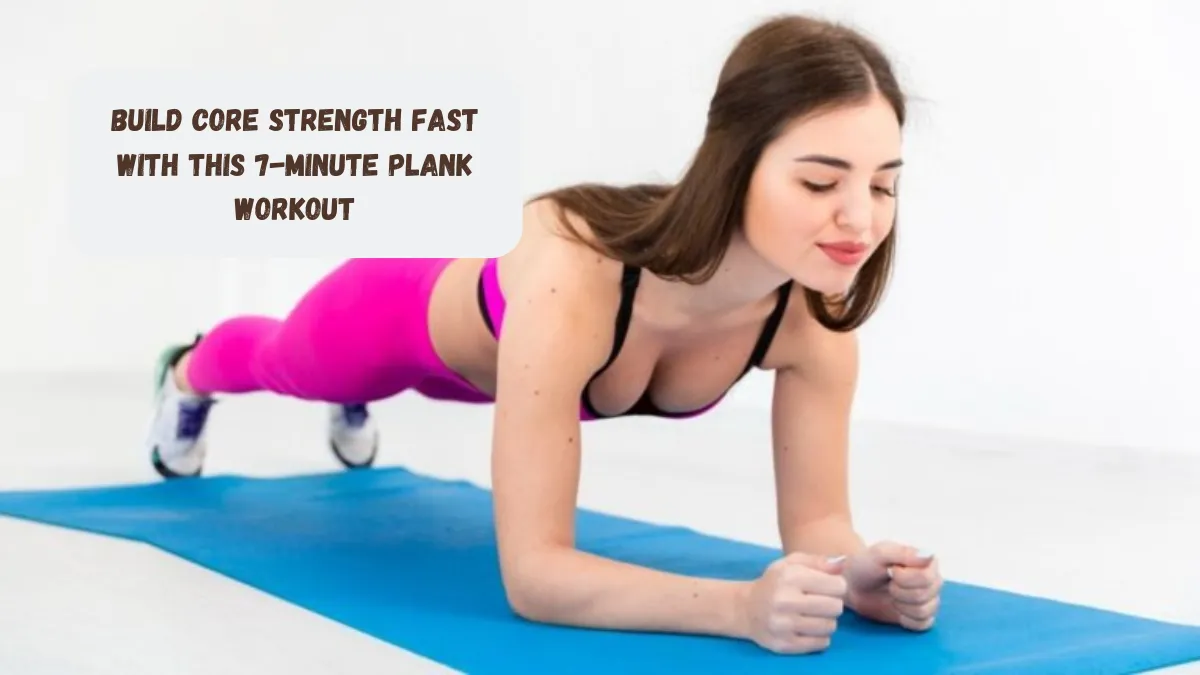Think of your body as a tall building. It’s nice to have shiny windows, strong walls, and a beautiful design, but it doesn’t matter if the base isn’t rock solid. Your heart is what holds you together. It’s not enough to have six-pack abs; your core is where your steadiness, power, and movement all come together. Even simple things, like bending over to tie your shoes or bringing groceries, can feel like climbing Mount Everest if you don’t have a strong core.
In practical exercise, core strength is very important, says Dr. Emily Carter, a well-known physical therapist. “It holds your spine in place, connects your upper and lower body, and powers all of your movements.” Still, a lot of us ignore this important group of muscles and instead work on our arms or legs, while our base falls apart.
Here are five different ways to do the plank that will work your core, help you stand up straighter, and keep your body’s “skyscraper” from falling down.
1. Standard Plank
All other plank versions are based on the standard one, which teaches you how to brace your core and keep your body in the right position. Put your arms right under your shoulders and do a forearm plank to start. Work your abs, squeeze your glutes, and keep your body straight from head to feet. To keep your neck from getting sore, look down at the floor.
People who are just starting out can get on their knees and keep their back straight, while more experienced people can lift one leg off the ground to make it harder. Stay in this position for 40 seconds and focus on deep breathing and using your whole body.
2. Side Plank (Each Side)
Side planks work your obliques, which are the muscles that help you turn and stay stable on your sides. Lay on your side with your feet stacked and one arm propped up on the other. Lift your hips up until your body is in a straight line from your head to your feet. For balance, keep your top hand on your hip or reach it up toward the ceiling.
Some people find it helpful to bend their bottom knee for support. More experienced users can lift their top leg or do a hip dip by dropping and raising their hips. Hold for 40 seconds on each side, making sure to keep your core tight the whole time.
3. Plank with Shoulder Taps
This dynamic version works your shoulders and obliques and tests your balance and agility. Put your hands under your shoulders and do a high plank to start. Keep your hips still and lift one hand to tap the shoulder of the other person.
Switch sides without moving your body around. For beginners, move more slowly and focus on staying in control. For more experienced users, add a push-up between each set of taps. Do this exercise for 40 seconds, switching taps the whole time.
4. Reverse Plank
The back, glutes, and legs are often ignored muscles that the reverse plank works on while opening up your chest and shoulders. Place your hands behind your waist and your legs out in front of you. Sit on the floor. Lift your hips and press into your hands until your body makes a straight line. Keep your chest open and your eyes forward.
To get more out of it, expert users can lift one leg off the ground, while beginners can bend their knees for support. Focus on keeping your body in a straight line and your breathing steady for 40 seconds.
5. Plank Jacks
Plank jacks are a great way to get your heart rate up and test your footing at the same time. Put your hands under your shoulders and do a high plank to start. Like when you do jumping jacks, jump your feet out wide and then back together. Don’t let your hips sag, and keep your core tight.
Novices can speed up the workout or add a push-up after every 5 reps. Beginners can step their feet out and in instead of jumping. Keep moving and using the right form for 40 seconds as you do this exercise.
Bottom Line
You don’t have to spend hours at the gym or do hard exercises to build a strong core. These five different types of planks can change your base in just seven minutes a day, making you stronger, bigger, and able to move better.
Always being the same is important. “Even small amounts of core work every day can add up to big changes over time,” says Dr. Carter. So, take care of your core like the base of a building—invest in it and watch your body reach new heights.
